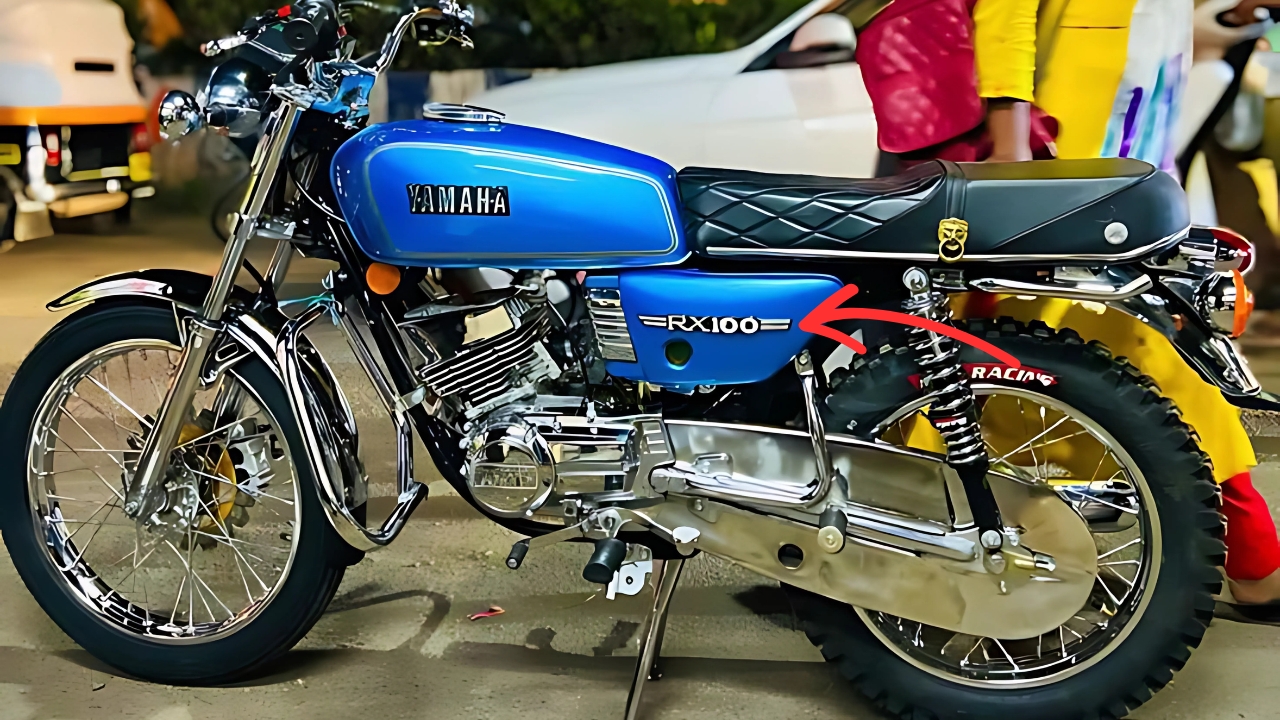Yamaha RX100 : The Yamaha RX100 stands as one of the most iconic motorcycles in Indian automotive history, capturing the hearts of enthusiasts and everyday riders alike during its production run from 1985 to 1996.
This lightweight two-stroke machine became synonymous with performance, reliability, and pure riding joy, earning a cult following that persists decades after its discontinuation.
The Birth of a Legend
Yamaha introduced the RX100 to the Indian market through its partnership with Escorts Limited, marking a significant moment in the country’s motorcycling landscape.
The timing was perfect – India was experiencing economic liberalization, and young riders were seeking machines that offered more excitement than the utilitarian motorcycles available at the time. The RX100 filled this void with its sporty character and accessible price point.
The motorcycle was based on Yamaha’s global platform but adapted specifically for Indian conditions and preferences. Its design philosophy centered on simplicity, performance, and durability – qualities that would make it beloved by mechanics and riders across the subcontinent.
Technical Specifications and Engineering Excellence
At the heart of the RX100 lay a 98cc, air-cooled, single-cylinder, two-stroke engine that produced approximately 11 horsepower at 7,500 RPM.
While these numbers might seem modest by today’s standards, the engine’s lightweight construction and responsive power delivery made the motorcycle feel significantly more powerful than its displacement suggested.
The two-stroke engine required a mixture of petrol and oil, typically in a 20:1 or 25:1 ratio, which became part of the ritual of RX100 ownership.
This requirement, while sometimes seen as inconvenient, contributed to the engine’s distinctive sound and smell that owners remember fondly.
The motorcycle featured a four-speed gearbox with a distinctive gear pattern that required riders to adapt their shifting technique.
The transmission was known for its precision and durability, with many examples still running smoothly after decades of use.
Weighing just 108 kilograms, the RX100 offered an exceptional power-to-weight ratio that translated into spirited performance.
The lightweight construction meant that riders could easily maneuver the motorcycle through traffic and achieve impressive acceleration figures for its era.
Design and Aesthetics
The RX100’s design embodied the sporty aesthetic that Yamaha was known for globally. Its angular fuel tank, sleek side panels, and minimalist bodywork gave it a purposeful appearance that stood out among the more conservative designs prevalent in the Indian market.
The motorcycle was available in several color schemes throughout its production run, with the classic blue and white combination remaining the most sought-after variant.
The graphics and decals were tastefully applied, contributing to the bike’s sporty character without appearing excessive.
The seating position was slightly forward-leaning, reinforcing the motorcycle’s performance intentions while remaining comfortable for daily commuting.
The handlebars, footpegs, and seat were positioned to provide an engaging riding experience that made even mundane journeys feel exciting.
Performance and Riding Experience
What truly set the RX100 apart was its remarkable performance capabilities. The motorcycle could achieve a top speed of approximately 100 kilometers per hour, which was impressive for its class and era. More importantly, it delivered strong acceleration that made overtaking effortless and city riding engaging.
The two-stroke engine’s power delivery was immediate and linear, providing riders with instant throttle response that became addictive.
This characteristic made the RX100 particularly enjoyable in stop-and-go traffic conditions where its quick acceleration proved advantageous.
Fuel efficiency was another strong point, with the motorcycle delivering between 35-45 kilometers per liter depending on riding conditions and maintenance. This economy, combined with its performance, made it an attractive proposition for cost-conscious enthusiasts.
Cultural Impact and Legacy
The RX100 transcended its role as merely a mode of transportation to become a cultural phenomenon. It appeared in numerous Bollywood films, music videos, and advertisements, cementing its status as a symbol of youthful rebellion and aspiration.
College students, young professionals, and motorcycle enthusiasts embraced the RX100 as their preferred ride. Its distinctive exhaust note became the soundtrack of Indian roads during the late 1980s and early 1990s, creating an auditory signature that many associate with that era.
The motorcycle also played a crucial role in introducing Indian riders to performance-oriented motorcycling.
Many enthusiasts credit the RX100 as their first exposure to what a truly engaging motorcycle could offer, influencing their passion for two-wheelers that continues today.
Yamaha RX100 launching in June
Production of the RX100 ended in 1996 due to increasingly stringent emission regulations that two-stroke engines could not meet. However, its influence on Indian motorcycling continued long after the last unit rolled off the production line.
Today, well-maintained RX100s command premium prices in the used motorcycle market, with restoration projects and modifications keeping the spirit alive.
The motorcycle’s legacy lives on through the countless riders it inspired and the memories it created, securing its place as one of India’s most beloved motorcycles.














